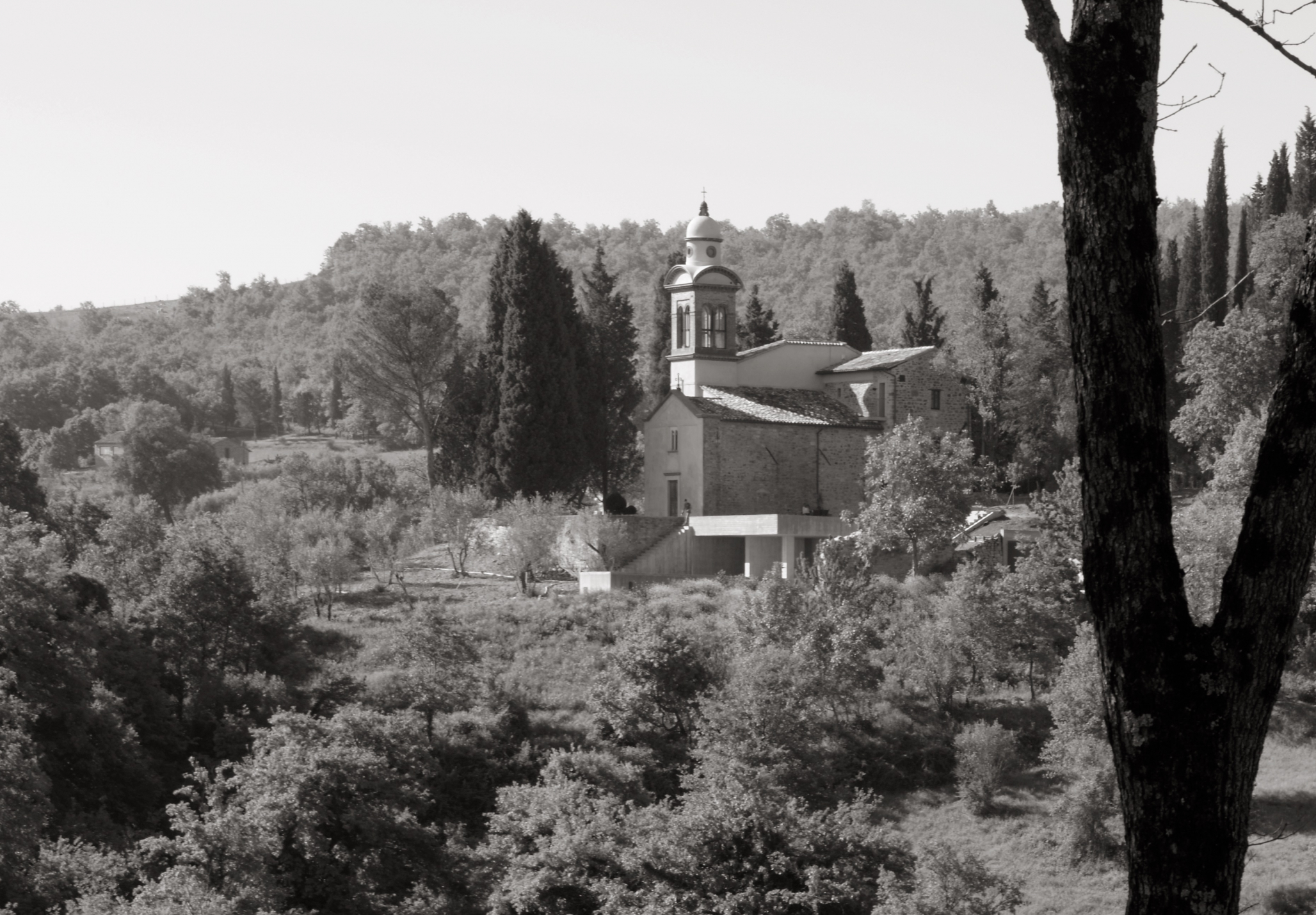Pierre d’Avoine Architects has converted a chapel in rural Umbria into a private house. Louis Mayes explores a project that weaves ecclesiastical structures and spaces into a contemporary home.
Crucially, the project asks questions about the way previous functions translate from religious to secular whilst maintaining the rigour of a hierarchical divide between the various spaces.
D’Avoine has tested this spatially in various areas. In one instance, the step between the seated area of the chapel and the altar has been retained, except now its significance is no longer religious, but is a break between residential and social. Each bedroom maintains a small working nook joined to the main sleeping area, which is defined by a finish of rough exposed stone in contrast to the bedrooms’ plastered walls. This lends an ascetic air and is a reminder that the previous occupant would also have used the space for study as well as rest.
Where some elements of the house have translated seamlessly between contemporary and historic uses, others are markedly defined. In the main bedroom a monolithic freestanding terrazzo bath and sink within one of the main bedrooms prompts thoughts of a renaissance aedicule or sepulchre – a small structure used to house religious relics. This transition of use is also expressed materially – the terrazzo of the bathrooms uses a local aggregate, but the polished surface sets the intervention apart from the existing walls that house it. In part to counter these contrasts, the decision was made to tie the house together using Pietra Serena as the floor finish – a practical choice, but also an Italian stone with many historical connotations.
The project’s long gestation period allowed for a well-developed set of details and a close relationship with local craftspeople, and the fact that the project architect Kuo Jze Yi lived on site for a large part of the construction process is evident in the consideration given to different areas. As d’Avoine points out “if you’re working with historic buildings you can’t detail everything in advance”. Due to this process the house remains well made and considered, but not over specified.
A pool has been carved from the landscape at the north east corner of the chapel. This new use is signalled by the introduction of a board-marked concrete that contrasts with the stone and plaster used for the rest of the house. This intervention incorporates an undercroft looking onto a terrace and pool formed from in situ concrete.
D’Avoine justifies the introduction of this additional material as an evolution of the series of materials from various ages that define the character of the site. The rough texture of the board-marked concrete brings a more abstracted texture to the palette. This element remains hidden when viewed from above, but is expansive when using the terrace, a distinct, but respectful stopping point on the journey through the grounds. “We’ve cut away and threaded a series of paths through the landscape” explains d’Avoine, referring to the routes that guide you from the entrance to the swimming pool.
Externally the project cascades: following the topography of the area, continuing the original religious and tangential axis of the house and intermittently changing material to signify changes in use. Despite the rhythmic setting out of the formwork, the concrete ties in well with the surrounding materials and assimilates the landscape and existing buildings.
Out of a landscape of dramatic temperatures and rigid vernaculars, this house has chosen its strengths through the contrasts it presents materially and spatially, defining an entirely new use that still manages to fall in line with the natural iterations of San Salvatore.
In a building, or cluster of buildings, that is constantly developing in relation to the landscape, d’Avoine has maintained a constant respect towards the existing house as well as escalating its standing amongst the nearby vernacular buildings. As we finish walking around the house Aferdita, the housekeeper at San Salvatore, offers a succint assessment of the project: “una casa Umbra davvero unica” – “an Umbrian house that is truly unique.”
The Pattern Book Press has published a monograph on San Salvatore with photographs by David Grandorge and essays by Peder Duelund Mortensen, Kuo Jze Yi and Pierre d’Avoine.
Source: Architecture Today

